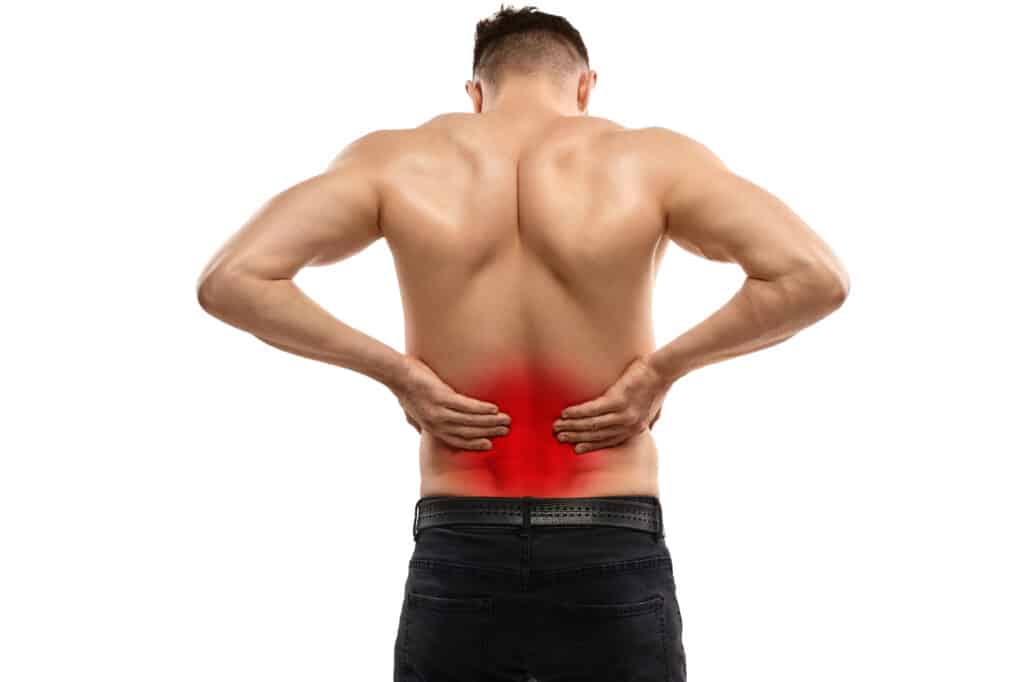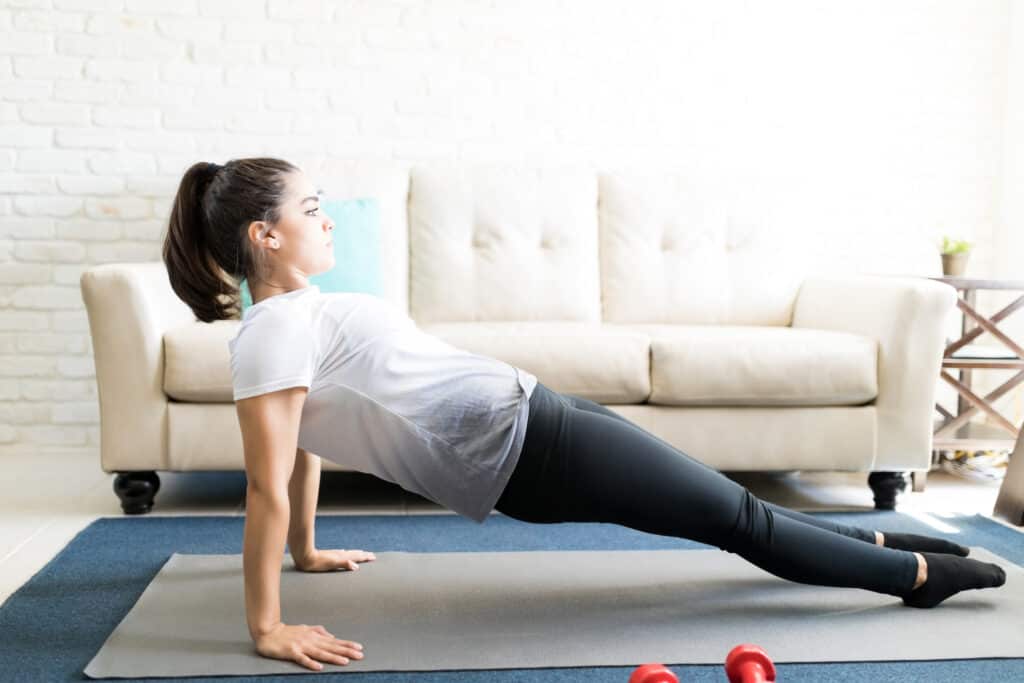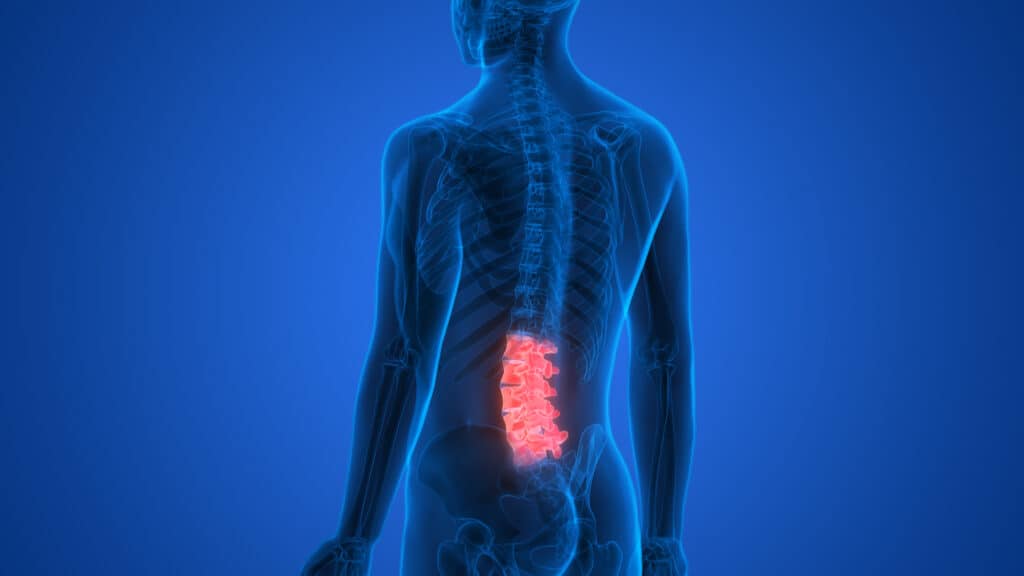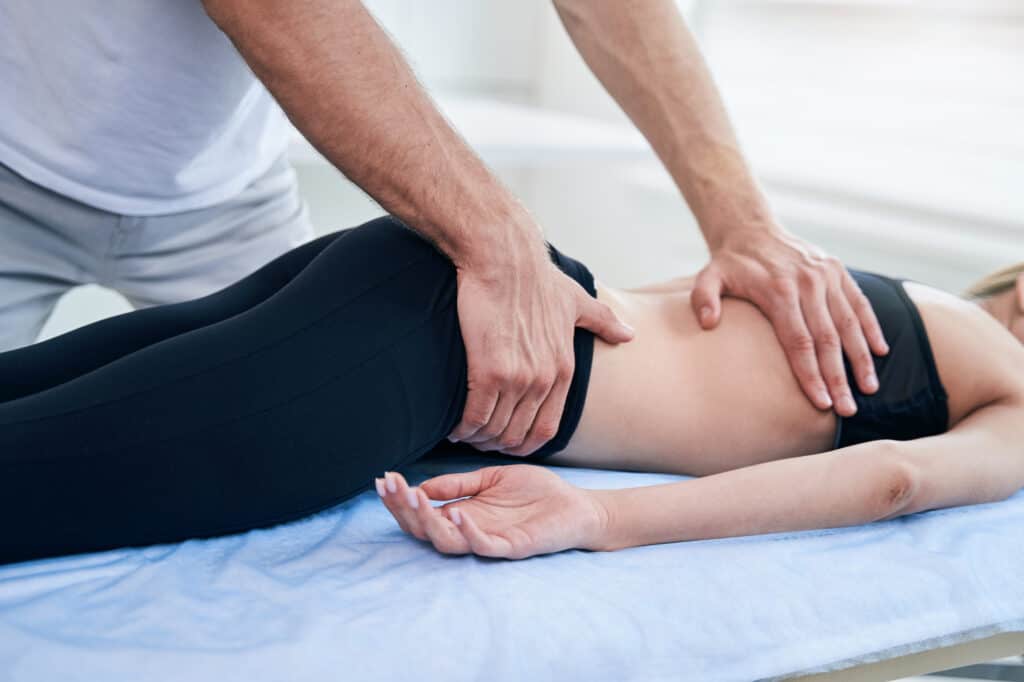
Do you feel tightness in your lower back during certain activities, or are you unable to perform certain tasks that involve bending and twisting like you once could?
Tight lower back muscles can really reduce your mobility and cause pain and stiffness. But fortunately, there are a few different methods that you can use to help alleviate the discomfort and improve the mobility and stability of your lower back muscles.
These methods include stretching exercises, massage therapy, foam rolling, and physical therapy. Understanding lower back pain is an important first step in finding the right treatment.
You can learn to manage and reduce your lower back pain with knowledge, patience, and effort. For example, the most important thing you can do to improve tight lower back muscles and reduce pain is to work on your posture to relieve the chronic tension at the route of (most) lower back problems.
More Blogs From Cardin & Miller:
What’s Causing The Pain Between My Shoulder Blades?
The Benefits Of Having A Physical Therapist Near Me
Lower Back Anatomy 101: The Lumbar Spine

The lower back muscles are often a source of pain because this area of the body might be sore for many reasons. So, understanding the complex anatomy of the lower back and what's going on underneath the hood can be key to understanding what's going on and finding relief.
The lower back is a complex structure of bones, muscles, and ligaments that provide support and stability to the spine.
The muscles are also responsible for movement for your entire lower back (lumbar spine) area. But by understanding the specific muscle groups in your lower back, what they do, and how they work, you can pinpoint what's going on and take steps to alleviate the pain.
Tightness in the lower back is often a result of long periods of inactivity or poor posture that leads to strain on the muscles.
Each muscle plays a vital role in keeping you pain free and mobile, from the erector spinal muscles that run along the spine to the multifidus muscles that help with rotation and bending. However, when these muscles get strained or overworked, pain follows.
Other causes include injury and underlying medical conditions. While mild cases can be relieved with stretching and rest, it's important to seek medical attention from a Physical Therapist if the tightness persists.
How To Ease Tight Lower Back Muscles

Try stretching and yoga exercises:
Tension and tightness in your lower back muscles can be a real pain, literally and figuratively. Luckily, stretching and yoga exercises are a great way to target the specific areas that are giving you trouble.
Whether it's your hamstrings, hips, or lower back feeling particularly stiff, incorporating some simple stretches into your routine can work wonders for your physical health and overall well-being.
Not only will you feel more limber and mobile, but you'll also be doing your body a huge favor by reducing your risk of injury and promoting healthy blood flow through the lower back and your entire body. So, give it a try. But stop right away if you feel more pain.
Invest in a self-massage device such as a foam roller or massage ball:
Buying a self-massage device can be one of the best decisions you make for your health and well-being, especially if you suffer from tight lower back muscles.
Whether you're an athlete or someone who sits at a desk all day, using a foam roller or massage ball can relieve tension and soreness in your muscles, improve circulation, and even help prevent injury.
With a foam roller, you can conveniently target specific areas of your body that need extra attention, especially where we all tend to hold chronic tension, like the lower back, neck, and shoulder muscles.
Incorporate lifestyle changes:
Taking care of your back is important in maintaining overall health and mobility. Incorporating lifestyle changes like regular exercise and working on your posture can go a long way in preventing tight lower back muscles.
Exercise is crucial for keeping your back muscles strong, supple, and flexible. Stretching, yoga, and Pilates are all great options for improving mobility and preventing tightness.
For example, engaging in activities that strengthen your back and core muscles can improve your balance and flexibility, reducing your risk of straining your lower back due to weak muscles.
Check Your Posture:
Paying attention to your posture throughout the day can help alleviate pressure on your spine and prevent long-term damage, which can result in chronically tight lower back muscles, pain, and stiffness. Your lower back muscles are essential in keeping you mobile and active, so it pays to look after them.
So, whether you're sitting at a desk or standing on your feet, make a conscious effort to stand or sit up instead of slouching and maintain a good posture without going too far against the spine's natural curvature.
These small changes to your daily routine can make a big difference in helping you feel more comfortable, stronger, healthier, and energized.
Sleep well:
One of the most crucial factors in all pain conditions is getting enough good quality sleep. If you have chronic pain, you must ensure you're getting enough rest and avoiding overexertion.
It can be a vicious cycle of pain > lack of sleep > more pain, and so on. Aim for at least 7 hours of good quality sleep per night.
If you're not getting that, try going to bed earlier or starting an evening routine – like having a hot bath or shower and dimming the lights – to prepare yourself for dropping off to sleep easily and sleeping undisturbed through the night.
See a Physical Therapist:
If you're dealing with chronic lower back pain or an injury, you may have already considered seeing a healthcare professional for help. While an MD can provide valuable insight, an expert Physical Therapist can provide more targeted and specific treatment options for your needs.
We undergo extensive training in the musculoskeletal system and can help identify the root cause of your pain or discomfort. We can develop a personalized treatment plan to help you reduce pain, improve mobility, and get back to feeling your best.
So, if you want to take a more targeted approach to lower back pain, consider seeking out the services of a Physical Therapist.
How Does Physical Therapy Help With Tight Lower Back Muscles?

Dealing with lower back pain is a common struggle for many people, and it can be difficult to determine when it's time to seek professional help.
Generally, if you have been experiencing persistent pain or discomfort in your lower back area for over six weeks, it may be time to see a Physical Therapist. Pain that interferes with your daily activities such as walking, sitting, or sleeping is also a signal to act.
Remember that lower back pain can be caused by various factors, including muscle strain, injury, or a more serious condition such as a herniated disc, so it’s always better to err on the side of caution and seek help to determine the underlying root cause.
Physical therapy is a very effective solution when it comes to finding relief from tight lower back muscles.
While it’s natural for our bodies to experience some muscle strain as we age caused by lifestyle factors like poor posture, insufficient exercise, or muscle imbalances. It doesn’t have to be that way. Physical therapy can help relieve muscle strain and tightness in the lower back and the rest of the body.
It doesn’t have to be that way. Physical therapy can help relieve muscle strain and tightness in the lower back and the rest of the body.
We teach you and guide you through exercises and stretches targeting specific muscles in your lower back to reduce the tightness and restore them to proper functioning. It works really well for relieving lower back tension.
But what is physical therapy, and how does it work?

Physical therapy is a specialized form of rehabilitation that utilizes therapeutic exercises and stretches to help you recover from injuries or medical conditions that limit your mobility and functioning. It’s a great way to help loosen and stretch tight muscles resulting from injuries or physical strain.
There are several techniques we use to tackle muscle tightness. Physical therapy can provide significant pain relief and improve strength and flexibility for people with tight lower back muscles.
We use techniques such as massage therapy, heat therapy, muscle and joint manipulation, and guided exercises to alleviate your pain and restore full flexibility and function to the lumbar (lower) spine.
But we tailor our personalized treatment plans and the exact therapies we use to your unique needs. Physical therapy can also prevent future injuries by strengthening the muscles surrounding your lower back.
During a session, your Physical Therapist may manipulate your lower back muscles with their hands to release tension and increase your lower spine flexibility.
They may also guide you through a combination of movement and stretching exercises to target specific areas of tension and increase your range of motion.
We may include massage therapy, too, to further relax and loosen the muscles. But whatever techniques we use, you can look forward to moving much more freely and easily – even after the first session.


